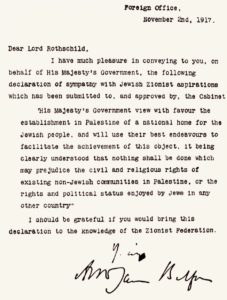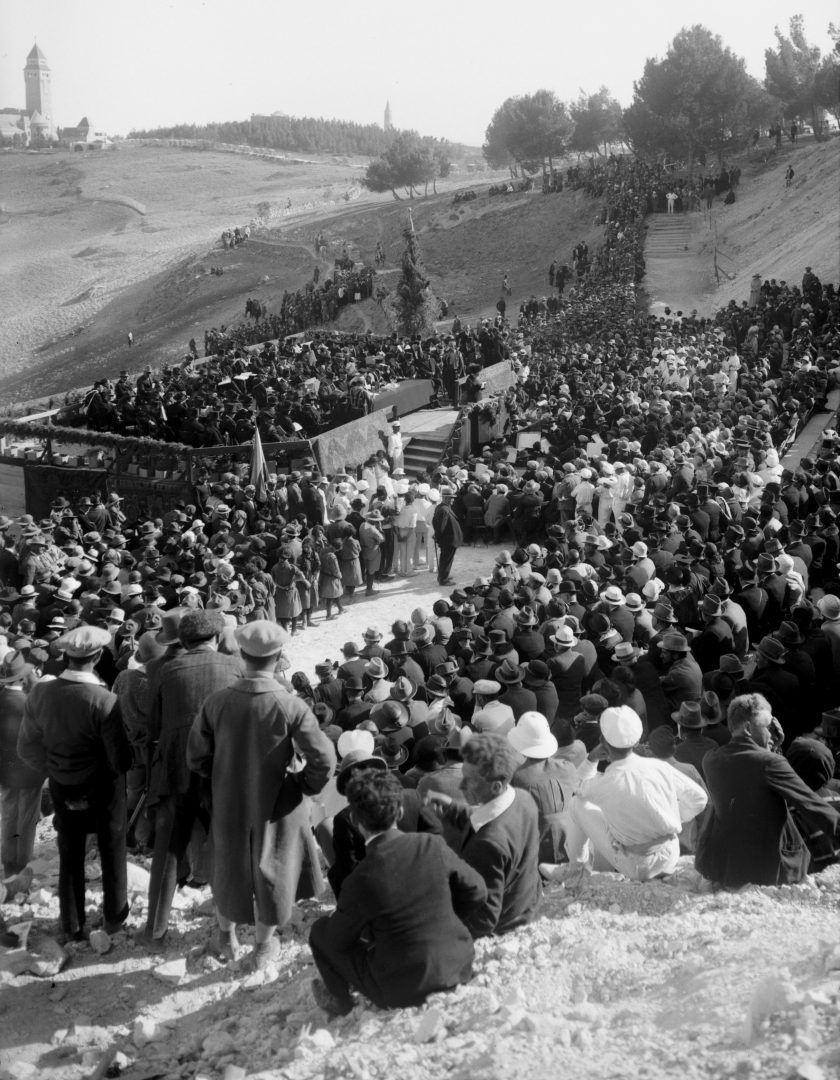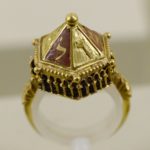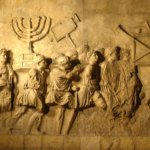Will the Real Palestinians Please Stand Up!
The plight of the Palestinians fills the news daily, even hourly. But who are the Palestinians and where do they come from? To answer that question, let’s take a look at where the terms Palestine and Palestinian come from.
Palestine is a Biblical word. It appears once in Joel 3:4. A similar word Palestinian also occurs in Exodus 15:14 and Isaiah 14:29&31. Both words come from the Hebrew word Pelesheth (P@lesheth) which occurs only eight times in the Old Testament. The other four times Pelesheth occurs it is translated as Philistia (Psalms 60:8; 87:4; 108:9), and Philistines (Psalms 83:7). Philistines come from a related word, Pelishtiy (P@lishtiy) as well. Pelishtiy is also translated as Philistim and Philistine and occurs 243 times.
Essentially, the Pelishtiy, or Philistines, were a people who inhabited the land of Pelesheth, or Philistia, in the Old Testament days. Philistia, or the land of the Philistines, occupied an area on the Mediterranean coast between Israel and Egypt in roughly the same region as the modern-day Gaza Strip.
The Philistines were an ancient Hamitic people whose origins are revealed in the Table of Nations given in Genesis chapter 10: “And the sons of Ham; Cush, and Mizraim, and Phut, and Canaan…And Mizraim begat Ludim, and Anamim, and Lehabim, and Naphtuhim, And Pathrusim, and Casluhim, (out of who came Philistim,) and Caphtorim (Genesis 10:6,13-14).”
The Philistines were associated with the descendants of Caphtorim (Kaphtoriy) early in their history as well. Deuteronomy 2:23 speaks of the Caphtorims (Kaphtoriy) who came out of Caphtor (Kaphtor). Amos 9:7 states that the Philistines came from Caphtor. Jeremiah adds that the Philistines are “the remnant of the country of Caphtor (Jeremiah 47:4).” Therefore, it seems that the Philistines were not only associated with but actually outlived their cousins, the Caphtorims.
Caphtor is generally thought to be the island of Crete. As such it was a part of the easternmost province of Asia Minor known as Cappadocia. Although some identify Caphtor with the Egyptian Coptos, Crete seems more likely since Cappadocia is the Greek equivalent of Caphtor. Besides, both the Philistines and the Caphtorims seem to have been associated with the Phoenicians (another Hamitic people but descended from Canaan rather than Mizraim). They were known collectively as the Sea Peoples. The association of the Philistines with Egypt apparently stems from the invasion of Egypt by the Sea Peoples in the 13th century B.C.
At any rate, the Philistines appear to have migrated from Crete to Egypt and then, either directly or indirectly, to the coastal region between Canaan and Egypt which eventually became known as Philistia or Palestine. Upon their arrival, they drove out the previous inhabitants, the Avim (Deuteronomy 2:23), and were firmly ensconced in the land by Abraham’s time (Genesis 20&21).
Keep in mind, however, that the land of the Philistines only occupied a small area of the land God gave to Abraham and his descendants. The greater part of the land between the Mediterranean Sea and the Arabian Desert was known as Canaan. The Canaanites, like the Philistines, were also descendants of Ham and are listed in the Table of Nations (Genesis 10). And, like their cousins the Philistines, the Canaanites eventually ceased to exist as a distinct people.
The Jews left the land for Egypt during Joseph’s time but later returned to the land under Moses. Joshua then led them as they reentered the land that God had promised them and began their conquest of it. Needless to say, their relationship with the Philistines was stormy at best. However, by about 586 B.C. when the southern Jewish kingdom of Judah was conquered by the Babylonians, the Philistines disappeared.
Though the Babylonians captured Jerusalem and carried most of the Jews off into captivity in 586 B.C., a small number remained in the land. It was from this remnant that Nehemiah learned of the state of Jerusalem while serving as the Persian King Artaxerxes’ cupbearer (Nehemiah 1:2-3). The Persians, who had conquered the Babylonians in 538 B.C., allowed the Jews to return to the land under Zerubbabel, Ezra, and Nehemiah.
With the demise of the Philistines the names Philistia, Palestinian, and Palestine fell into disuse. Consequently, those terms do not appear in the New Testament. They did not reappear until many years later when the land was formally annexed by the Romans in 6 B.C. as part of the province of Syria Palestine. However most of the land encompassing present-day Israel was known as Judea, Samaria, and Galilee.
The Jews chafed under Roman rule.
After numerous revolts and insurrections, the Romans, led by Vespasian, invaded with 50,000 troops from Syria in 67 A.D. Under Vespasian’s son, Titus, they captured Jerusalem and razed the Jewish temple in 70 A.D. To celebrate the event the Roman government even struck a coin with the phrase “Judea Capta” (“Judea has been captured”).
Despite the destruction of Jerusalem, Jewish resistance to the Romans continued. Finally, after the revolt of Bar-Kokhba in 135 A.D., Emperor Hadrian moved to eliminate the Jewish state completely. The bulk of the Jewish population was forcibly removed and sent into exile and captivity. Jerusalem was renamed Aelia Capitolina and a temple to Jupiter was built on the ruins of the Jewish temple. The names Judea, Samaria, and Galilee were abolished and Hadrian renamed the land Palestine after the Jew’s ancient enemies the Philistines.
The first Christian use of the name Palestine, however, did not occur until about 300 A.D. The early church historian Eusebius referred to himself as one of the bishops of Palestine. Unfortunately, the name has become fixed in Christian literature ever since. In fact, maps of “Palestine” commonly appear in Bible dictionaries and encyclopedias and at the back of Bibles today.
Over the next few centuries, the number of Jews gradually increased in the land. Though they were not allowed to live in Jerusalem, the Jews were generally allowed restricted access to the Temple Mount. Conditions remained much the same under the Byzantine Empire, though Jerusalem regained its name. Also, Palestine was joined with southern Transjordan (present-day Jordan) in the fifth century and the whole area was divided into Palestinian Prima, Secunda, and Tertia.
Palestinian Prima, along with part of Palestinian Tertia became known as Jund Filatine (Jewish Palestine) after the Muslim conquest of the land in the seventh century. Palestinian Secunda became Jund Urdunn about the same time. And, through it all, Jews lived in the land along with European, Persian, and Arab immigrants under varying degrees of freedom and oppression.
The Ottoman Empire held sway over the land from 1517 to 1917. During their rule absentee Turkish landlords, known as effendis, overwhelmed their Arab tenant farmers with increasingly onerous usury fees and taxation. By the mid-nineteenth century, many Arab tenant farmers had fled and the land became more and more desolate.
A wave of Jewish immigration began about that time as well.
Jews began buying up the land from the effendis, often at grossly inflated prices. As their numbers grew the Jewish population in the land increased greatly. Jerusalem alone went from about 5000 Jews in 1839 to nearly 10,000 by the late 1850s. Despite a law banning Jews from immigrating to and buying land in 1887, a second wave began in 1904. By 1914 there were about 40 Jewish settlements in the land and out of a population of approximately 722,000 some 60,000 were Jews.
To offset the growing Jewish presence, the Ottomans resettled large numbers of European Muslims between 1847 and 1880. Further Muslims arrived from former Ottoman provinces in Europe in the late 1800s as well. In 1878, for instance, after Austria annexed Bosnia-Herzegovinia, a number of Bosnian Muslims emigrated to coastal plain Palestine.
The Ottomans lost their hold on the land following World War I.
The British captured Jerusalem in 1917 and issued the Balfour Declaration, calling for the creation of a Jewish homeland in Palestine. On January 4, 1919, Emir Feisal ibn-Hussein, representing the Arab Kingdom of Hedjar, and Chaim Weitzman, representing the international Zionist Organization, met in London and signed a formal agreement mandating a Jewish homeland in Palestine.
 In 1920 the League of Nations carved up the former Ottoman holdings in the Middle East, assigning the newly created territories Syria and Lebanon to France and Iraq and Palestine to Britain. However, in 1922, bowing to pressure from the British Foreign Office and Feisal ibn-Hussein’s brother, Abdullah, Britain divided Palestine in violation of both the Balfour Declaration and the League of Nations Mandate of 1920.
In 1920 the League of Nations carved up the former Ottoman holdings in the Middle East, assigning the newly created territories Syria and Lebanon to France and Iraq and Palestine to Britain. However, in 1922, bowing to pressure from the British Foreign Office and Feisal ibn-Hussein’s brother, Abdullah, Britain divided Palestine in violation of both the Balfour Declaration and the League of Nations Mandate of 1920.
The land west of the Jordan, about 8,000 square miles, remained Palestine. The nearly 38,000 square miles of land east of the Jordan became the Emirate of Transjordan or modern-day Jordan. Abdullah became the king of Jordan and the British maintained control of western Palestine.
In February 1947, Britain dumped the problem of the Jewish homeland into the lap of the United Nations. The U.N. further partitioned western Palestine in November of the same year. The Negev Desert, the coastal plain between Haifa and Tel Aviv, and parts of northern Galilee were set aside for Palestine’s Jewish population and the rest was given to the Arabs. Jerusalem was set aside as an international enclave. The Jews of Palestine accepted the partition but the Arabs of Palestine and the surrounding states did not.
Frustrated with British efforts to hinder Jewish immigration in favor of Arab immigration and the further shrinking of their homeland, the Jewish community declared its independence on May 14, 1948. They rejected the name of their ancient enemies, the Palestinians or Philistines, and called their new country Israel.
Almost immediately the surrounding Arab states attacked Israel. Forces from Jordan, Egypt, Syria, Lebanon, and Iraq moved into the predominantly Arab areas of Israel but Israeli forces managed to hold all the areas allotted to them by the U.N. in 1947. They also captured some of the land taken from them and designated by the U.N. for the Palestinian Arabs. Jordan annexed the West Bank and Egypt took control of the Gaza Strip.
Meanwhile, thousands of persecuted, oppressed, and terrorized Jewish refugees fled from the Arab world into Israel. The Jewish population of the Arab world plummeted from more than 850,000 in 1948 to less than 30,000 today. The new arrivals were quickly welcomed and assimilated into the reborn Jewish homeland.
Arab refugees did not fare quite so well.
Contrary to popular belief, the bulk of the Arab refugees were not expelled by Israel. In fact, the Jewish Haifa Worker’s Council issued an appeal for the Arabs to stay. The surrounding Arab leaders, however, called on the Arabs to leave. Consequently, about 68% of the refugees were those that listened to the Arabs rather than the Jews. Furthermore, the U.N. changed the accepted definition of refugees, defined as those forced to leave their “permanent or habitual” homes, in 1948 to allow for Palestinian Arabs to be designated as refugees if they had been in Palestine for only two years before 1948.
Instead of assimilating their fellow Arabs and Muslims the surrounding Arab states forced them into refugee camps. The refugees were told to wait there until the Jews could be driven out of the land and the state of Israel obliterated. Rather than take care of them themselves, the Arab leaders petitioned the U.N. to take care of them. These Arab refugees from Israel became known as the Palestinians.
Now, several wars and numerous conflicts later, we have the Arab world still referring to the land as Filatine (Palestine) and the Jews as invaders and trespassers who stole their land. In an attempt to legitimize their claims and establish a historical presence in the land they claim that the Arab refugees are the true Palestinians. And, despite centuries of evidence to the contrary, most of the world has bought into their false claims.
So who are the real Palestinians?
Both the Jewish and Arab residents of the land have been known as Palestinians since the Roman emperor Hadrian renamed the land Palestine in 135 AD. However, neither the Jews nor the Arabs are the real Palestinians. The Jews are a Semitic people descended from Abraham through Isaac and Jacob. It’s not the Arabs either. The Arabs are also Semitic peoples descended from Abraham, only through Isaac’s brother Ishmael and Jacob’s brother Esau.
The real Palestinians were the Philistines of old, a Hamitic people descended from Mizraim. They inhabited the real land of Palestine which was only a small strip of land along the Mediterranean coast in the south of Israel known as the Gaza Strip today.
The real Palestine, along with the land of Canaan, was given to Abraham by God in Genesis 12:6-7, 13:14-17, 15:18, 17:8, and 24:76. The promise of the land was confirmed to Abraham’s son Isaac, not Ishmael, in Genesis 26:1-5 and then to Jacob in Genesis 28:1-4, and 35:11-12 and Jacob’s sons in Genesis 48 and 49. The promise of the land was never given to Ishmael and Esau, nor to their descendants.
I’m sure the real Palestinians, as well as the real Canaanites, would stand up and claim the land today if they existed. However, they won’t because the don’t. In the meanwhile, let’s call the modern-day Palestinians what they really are: Arabs. And, while we are at it, let’s call the land what Jesus called it: Israel (Matthew 10:23; Luke 4:27).






